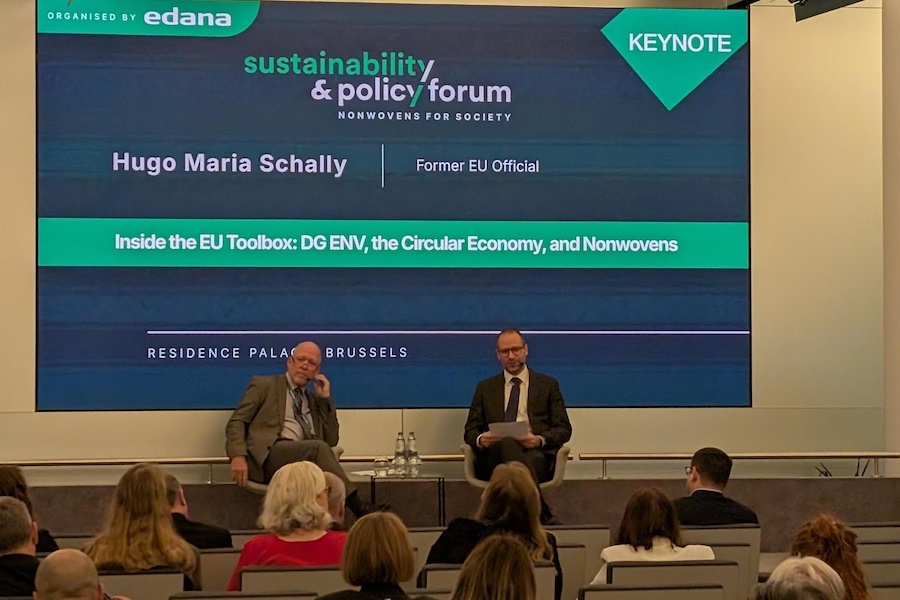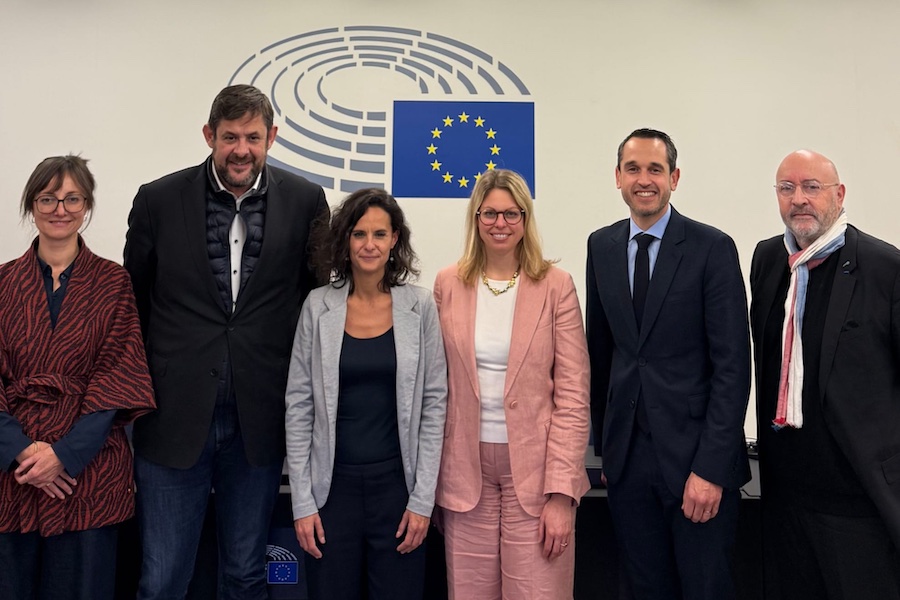#Europe
NextGenerationEU: Two years on since its adoption, the Recovery and Resilience Facility continues to be a central driver of the EU's green and digital transformation
The Communication takes stock of the concrete results achieved so far through the RRF's unprecedented double-push for green and digital reforms and investments in Member States. It also outlines further steps for supporting the continued successful implementation of national recovery and resilience plans. The annexes to the Communication clarify certain technical aspects of the way in which the Commission assesses Member States' progress.
President of the European Commission Ursula von der Leyen said: “Our recovery plan NextGenerationEU has become even more than a vital response to the COVID-19 pandemic. Two years after the creation of the fund, we have already disbursed more than EUR 140 billion and we overachieved our initial investment targets for the green and digital transitions. Now, with Russia's brutal invasion of Ukraine and a global energy crisis, the fund has become a key element of our Green Deal Industrial Plan. It will support our Member States on the road to net-zero, with the additional financial boost of REPowerEU. NextGenerationEU has proven to be a capable instrument to address many different challenges our Union is being confronted with. The transformative reforms through Member States' national recovery plans are key to modernize and strengthen our European Union. Speedy implementation should continue.”
Supporting the post-pandemic recovery while addressing new challenges
Since its creation two years ago, the RRF has had a transformative impact on Member States' economies, for instance driving reforms of the civil and criminal justice systems in Italy, labour market reforms in Spain, improving affordable housing in Latvia, promoting investments in offshore renewables in Greece and enabling the digitalisation of schools and businesses in Portugal.
These changes are being enabled by the RRF's unique design, which combines national plans for reforms and investments with common priorities and funding. When looking at Member States' recovery and resilience plans, we see that around EUR 203 billion of the total allocation contribute to measures aimed at reducing greenhouse gas emissions by at least 55% by 2030. Around EUR 131 billion contribute to measures to digitally transform Europe's economies and societies. Around EUR 138 billion has been dedicated to social spending and policies for the next generation.
The RRF's design is steering a virtuous cycle of change, whereby the reforms put forward by Member States lay the ground for the subsequent investments set out in their recovery and resilience plans, as well as those driven by other EU funds, national funds and, crucially, the private sector. In the medium-term, the Commission estimates that the investments funded by NextGenerationEU could boost the EU's GDP by around 1.5% in 2024, and further stimulate job creation.
The RRF was established in the context of the COVID-19 crisis to support Member States' economic and social recovery. It has been a vital response to the pandemic-induced economic downturn. It has been delivering reforms and investments, fast-forwarding the green and digital transitions and increasing the Union's overall resilience. The RRF's implementation is now taking place in a very different context, marked by Russia's war of aggression against Ukraine, high inflation, and an energy crisis.
Against this constantly evolving backdrop, the RRF has proven to be a highly agile instrument, able to address several newly emerging challenges. It therefore remains at the core of our efforts to address the priorities linked to the EU's energy security, industrial competitiveness, and the industrial transition to a net-zero economy.
Accelerating the implementation to deliver on the EU's priorities
To date, the Commission has disbursed over EUR 144 billion under the RRF, including both grants (EUR 96 billion) and loans (EUR 48 billion). Many more disbursements are expected as we move towards the second half of the RRF's lifetime. Member States should make their best efforts to fully use the opportunities provided by the RRF and deliver in line with the timelines they committed to in their plans.
In the Spring of 2023, Member States are expected to complement their recovery and resilience plans with REPowerEU chapters, to provide a joint response to the global energy crisis. The new or scaled-up reforms and investments included in the chapters, financed by the RRF's strengthened financial firepower of up to EUR 270 billion, will enable Member States to rapidly phase out the EU's dependence on Russian fossil fuels and accelerate the clean energy transition.
The REPowerEU-driven reforms and investments, which we encourage Member States to present as soon as possible, will also deliver on the synergies foreseen by the EU's Green Deal Industrial Plan. They will finance measures promoting the greening of industry, supporting EU net-zero industry projects, incentivising R&I zero emission breakthrough technologies and assisting industries in the face of high-energy prices, including through tax breaks.
Increasing transparency and stakeholder engagement to improve efficiency and predictability
The accelerated implementation of the RRF and the efficient delivery on its objectives go hand in hand with a high level of transparency on the functioning of the Facility. The Commission always strives for the utmost transparency, and has for this purpose set up the Recovery and Resilience Scoreboard, providing real-time information on the disbursements and progress made by Member States.
The REPowerEU Regulation further increases transparency by requiring Member States to publish information on the 100 largest final recipients for each national plan. It also strengthens the role of stakeholders – with a focus on local and regional authorities and social partners – most notably at the stage of preparing the REPowerEU chapters.
Today's Communication also presents two implementation tools to add predictability and transparency to the RRF. Outlined in the annexes to this Communication, the Commission is sharing its framework to assess the satisfactory fulfilment of milestones and targets when processing payment requests. It is also publishing a methodology to determine the amount to be suspended in case of a Member State's partial achievement of the milestones and targets related to a payment request. These tools come in addition to the Commission's guidance on the revision of the plans in the context of REPowerEU adopted on 1 February.
Next steps
Next year's mid-term term evaluation of the RRF will provide another opportunity to take stock and assess the progress made and lessons learnt from the implementation of the RRF.

















